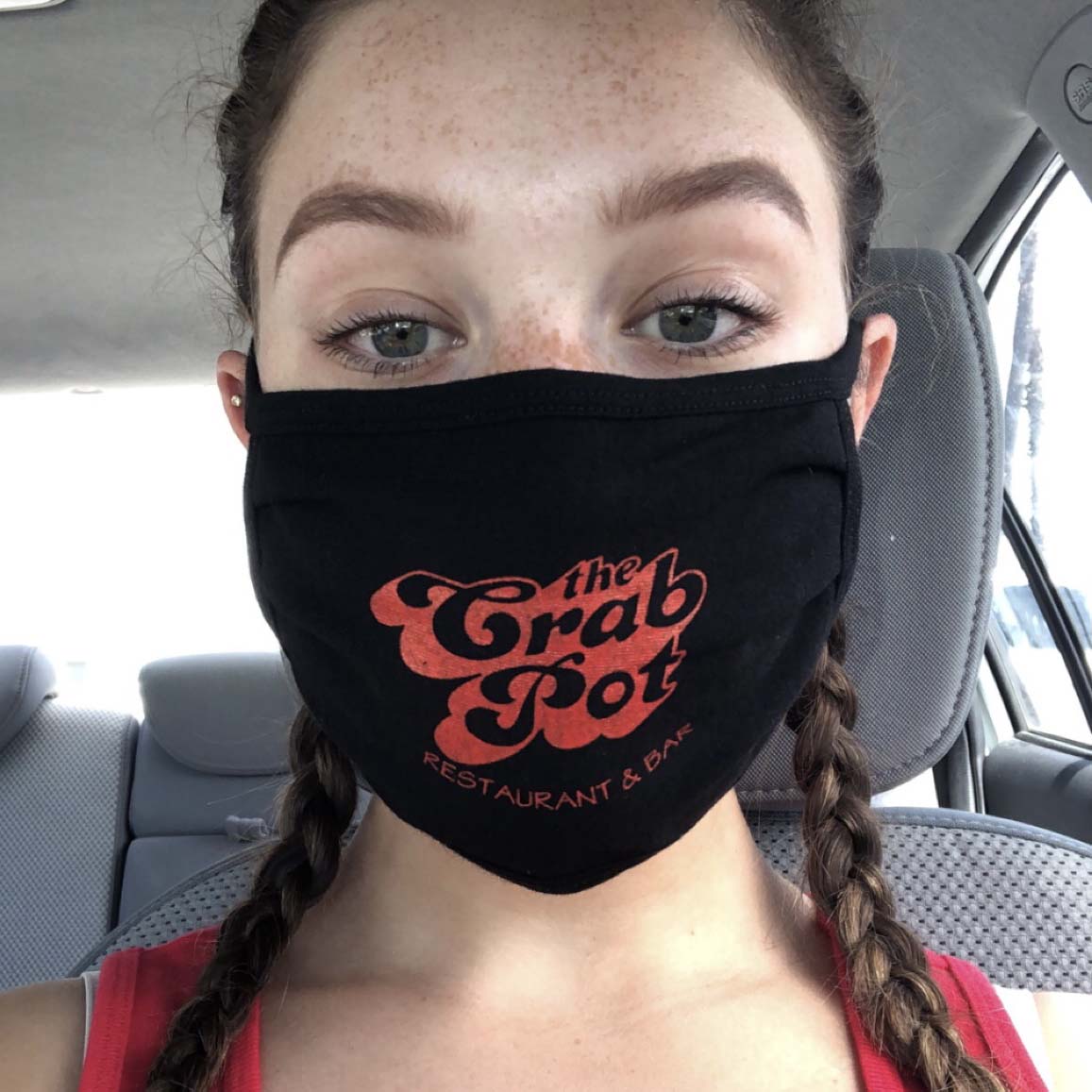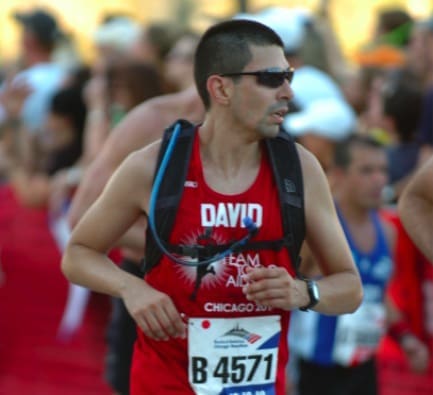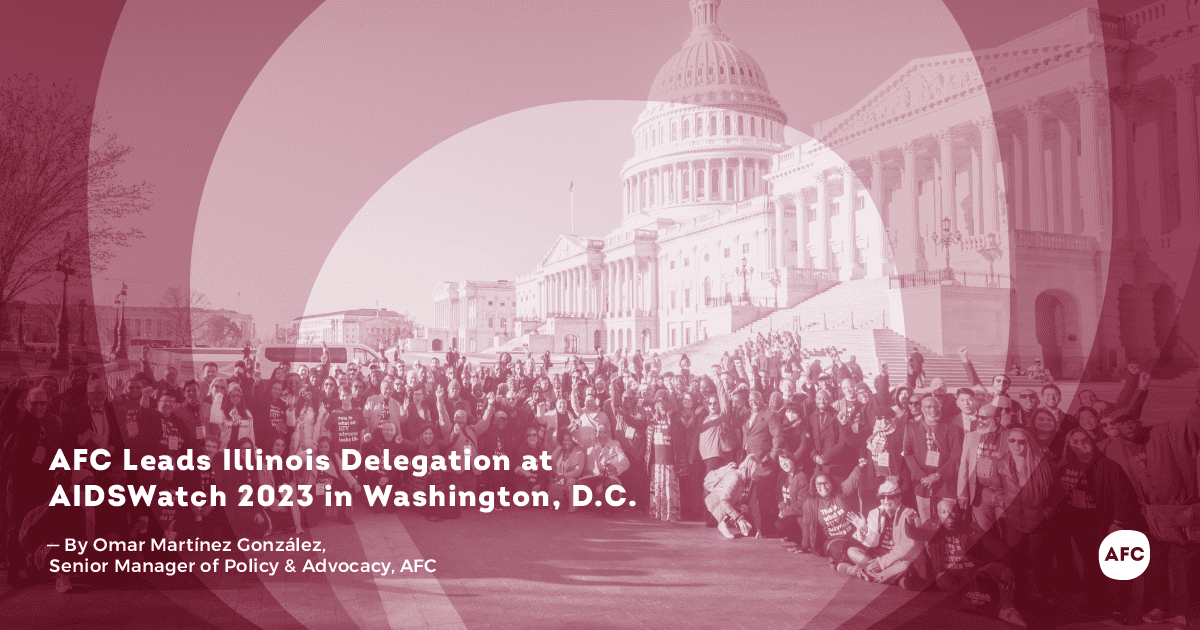 By Ella Shapiro
By Ella Shapiro
Working as a server can be incredibly stressful. During my shifts I am constantly multitasking: running food, taking orders and calming upset customers. I prepare each day by stocking extra plates and silverware, making sure I know the daily specials and fluffing the cushions on each chair. I prepare like this in the hopes my shift will run more smoothly. But being a server during a pandemic? That’s something I could never prepare for.
My name is Ella, and you might or might not already know me as AIDS Foundation Chicago (AFC)’s editorial intern. When I’m not writing stories for AFC’s blog or taking journalism classes at my school, California State University, Long Beach, I work as a server at a nearby seafood restaurant.
Like many people, I did not know what to expect when the pandemic started. In efforts to reduce the spread of COVID-19, restaurants in Southern California stopped allowing guests to dine-in and transitioned to delivery and take-out services. The closure of restaurants and other similar establishments left me, and almost 800,000 other people working in Los Angeles County’s hospitality sector, unemployed. I spent the next few months secluded in my apartment where I finished the spring semester of my junior year online and practiced social distancing. In June of 2020, I received the news that restaurants were reopening and that I would be going back to work.
I had mixed feelings when I heard this. On one hand, I was tired of spending every day in my apartment. I missed being outside and interacting with people. On the other hand, I was terrified of getting COVID-19, and even more scared of spreading it to others. I knew that as a server I would be exposed to many people during each shift, and that while they were dining, they would not be required to wear masks. Despite my conflicting feelings, I knew that I had to return to work because I could not afford to continue being unemployed.
Going back to work felt surreal at first. I had to wear a mask and a plastic face shield; guests were only allowed to eat outside; and nearly half of the restaurant’s tables had been removed to make it possible to keep an eight-foot distance between each party. This new environment did not resemble the one I was used to working in, but I quickly adjusted and did my best to stay positive.
This adjustment continued until winter, when restaurants in Southern California closed again due to a rapid increase in new COVID-19 cases.
Now, it is almost a year after the initial restaurant closures, and restaurants have reopened with limited indoor and outdoor dining. I no longer think twice about putting on my mask and face shield before each shift; it is simply part of my routine.
On March 1, people working in food and agriculture in Los Angeles County, including restaurant workers like me, became eligible to get vaccinated against COVID-19. A week later, I received my first dose of the Moderna vaccine. Like a lot of people who were initially hesitant to get vaccinated, I had my reservations, but ultimately chose to get vaccinated in order to protect myself while I am at work, where I cannot adequately socially distance from my coworkers and guests.
Once I receive my second dose of the vaccine in April and am fully vaccinated, I will not only be physically safer while serving, but I will also feel less anxious when interacting with people during my shifts, which is a huge benefit for my mental wellbeing.
In the past year, I have grown to be comfortable with the uncertainty that COVID-19 has created, but it has been difficult to accept that other service workers and I have had to put ourselves at risk of getting COVID-19 to support ourselves financially. Among other issues, the pandemic has highlighted the inequalities that exist for people working low-wage service jobs. Reports have indicated that in Los Angeles County, these jobs are more likely to be held by Black and Latinx residents than white residents, and have contributed to a higher number of COVID-19 cases reported in Black and Latinx communities. Even as cases decline across the county, disparities remain, and systemic racism has contributed to disproportionately devastating health outcomes for communities of color.
I am incredibly grateful that in Los Angeles County food and agriculture workers have been prioritized for the vaccine, because I feel like we are finally receiving some protection after months of being vulnerable to COVID-19. I am also excited to see restaurant workers in other parts of the country becoming eligible to be vaccinated as the vaccine roll out continues. In Chicago, people working in food and beverage services are included in Phase 1C of the city’s vaccine distribution plan, which began March 29.
After a year of fear and instability, I finally feel like there is a light at the end of the tunnel. Now, I am still multitasking: running food, taking orders and becoming hopeful about the months ahead.


